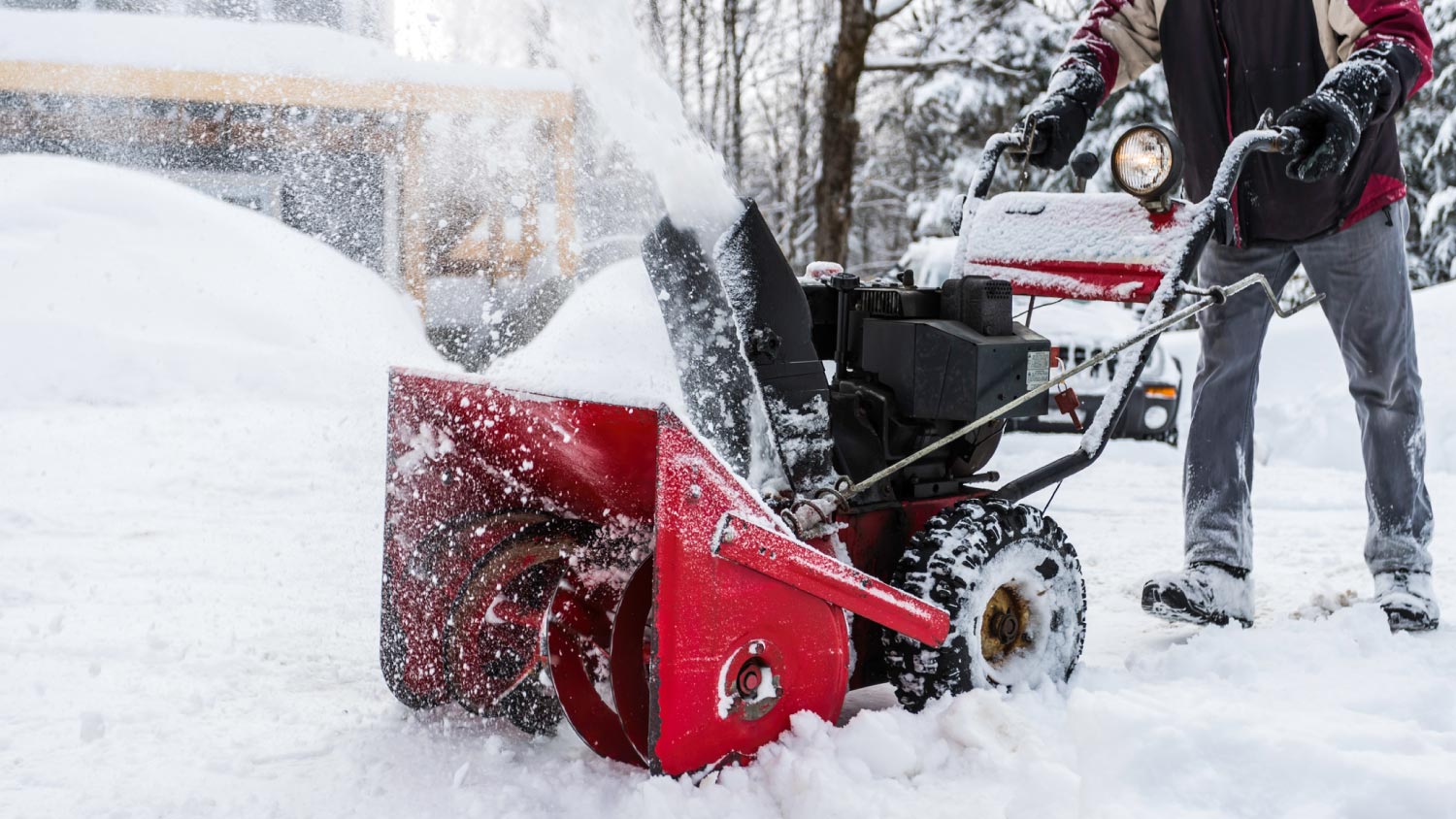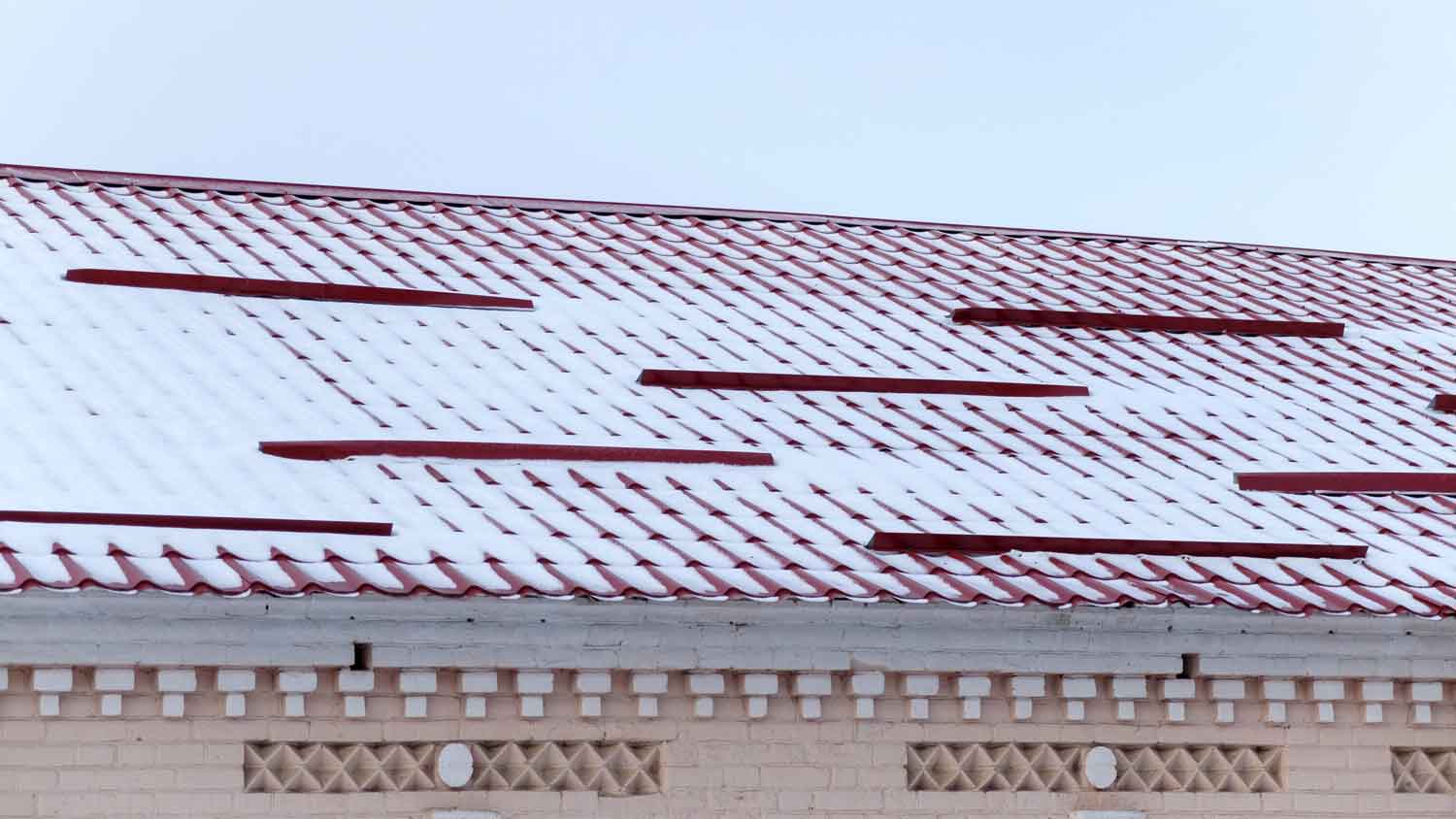
Get the latest snow removal cost estimates, including average prices, key cost factors, and tips to help homeowners budget for safe, efficient snow removal.
Keep your feet on solid ground with these helpful tips


There's no stopping the onset of winter—and, with it, the potential for snowy and icy sidewalks, steps, and driveways. While an icy walk or driveway can be hazardous, there are several icy sidewalk solutions homeowners can implement to lessen the danger. Our guide explains what to put on an icy sidewalk, plus things you can do to keep snow and ice from accumulating in the first place.

The best solution for an icy sidewalk is prevention. Immediately after the snow flies, fire up the snowblower and get to work—the sooner, the better. But that's not enough. Even the best snow blowers leave slushy residue that will eventually freeze and form a layer of ice. After snow blowing, finish the job with a shovel and perhaps even a broom. The more snow you can remove from the walkway, the less chance of ice forming.
We understand if you're not a fan of clearing snow or can't complete the task as soon as the snow stops falling. It's more cost-effective but also more time-consuming to do the job yourself, so the cost of professional snow removal is often worth it.
If ice is already on your sidewalk or driveway, you have some effective options for removing it. De-icer products use different forms of salt to get rid of the ice. Salt melts ice by lowering its freezing point; note that we’re using the term salt loosely here to mean various compounds, including calcium chloride, magnesium chloride, and sodium chloride. Certain ice melt products are better than others for specific uses—some are pet-friendly or less prone to damaging plants, for example.
Calcium chloride compounds are relatively safe for plants and pets. They're quite effective at melting ice down to around -15 F, while sodium chloride is less expensive but also somewhat less effective and not as pet- or lawn-friendly. Magnesium chloride offers a balance of price and effectiveness.
For severe icing, salt may not be enough. An ice-chopper, some muscle, and a metal-blade shovel may also be necessary to chip away stubborn ice. However, using salt first can help deteriorate the ice enough to make it easier to power through with other tools.
If sitting ice isn't causing any damage and doesn't pose a safety threat, you can sometimes leave it for the sun to take care of. Spread ordinary sand, gravel, sawdust, store-bought granules, cat litter, or straw over the ice to create traction on the slick surface. Remember to use caution when walking on the surface, as this is not necessarily a perfect solution. If the sun doesn’t completely melt the ice, remove it with a shovel or ice melt product before dusk, when temperatures begin to drop.
Besides physically removing snow or chipping ice away, the next best trick is pretreatment. Several pretreating liquid de-icers are now available. They're similar to the salty liquid chemicals municipal departments spray on the streets when snow is forecasted.
Spray these compounds when snow is heading your way, following the manufacturer's instructions on the label to limit the snow's ability to stick to the concrete. Doing so makes snow removal more manageable before it has a chance to ice up. You still need to clear the snow after it falls, but pretreating sidewalks and driveways makes it easier to do so more thoroughly.
Navigating icy sidewalks is a scary proposition. Even if you hire the best snow removal company in your area, you may still find yourself battling with meltwater refreezing in some places on your property. The solution may come in the form of a snow-melting mat.
Available at retailers, these mats plug into an outlet and use electricity to heat themselves gently. The heat is enough to melt snow or maintain water in its liquid state so ice can't form.
Use snow-melting mats on doorsteps, sloping walks, or anywhere else where persistent ice is a problem. Always plug them into a GFCI outlet for safety.
If you live in a snowy area and have money in the budget, installing a heated driveway is one of the best ways to beat Old Man Winter at his game. Heated driveways are permanent fixtures; they utilize radiant heat under the surface to keep concrete areas free from ice no matter what winter brings.
This solution is expensive and typically requires replacing the driveway. Still, it can be worth the investment and could mean the end of physical snow and ice removal on your property.
A professional snow removal service can be at your doorstep in no time with heavy-duty equipment that can clear out your driveway, walkway, and steps quickly. If you live in an area with frequent snowfall, consider getting a snow removal contract with a local service to guarantee prompt clearing on snowy or icy days. The one downside to this solution is that it will cost more than DIY snow removal. The cost of snow removal ranges from $50 to $200 per session.
You can coat newly poured driveways and walkways with a clear finish that also prevents water absorption, which can help keep ice and snow from sticking to the surface. These treatments contain chemicals like silicone or siloxane, both ingredients that repel water. Whether you have a new or existing concrete, you can hire a driveway professional to apply the coating before winter hits to keep the surface clear when snow and ice start to accumulate.
From average costs to expert advice, get all the answers you need to get your job done.

Get the latest snow removal cost estimates, including average prices, key cost factors, and tips to help homeowners budget for safe, efficient snow removal.

Discover the cost to install snow guards. Learn about average prices, key cost factors, and tips to save on your snow guard installation project.

Using traditional rock salt to melt ice can negatively impact the environment, your pets, and more. Learn how to melt ice with salt.

Winter storms and blizzards are no joke, even if you are relatively snug at home. Follow these tips to survive and thrive during brutal weather events.

If you’re wondering how to remove snow from driveway without a shovel, you have plenty of options. Consider these tips to create a no-snow zone.

Rock salt and ice melt each have distinctive characteristics. Read on to find which one is best for your situation.